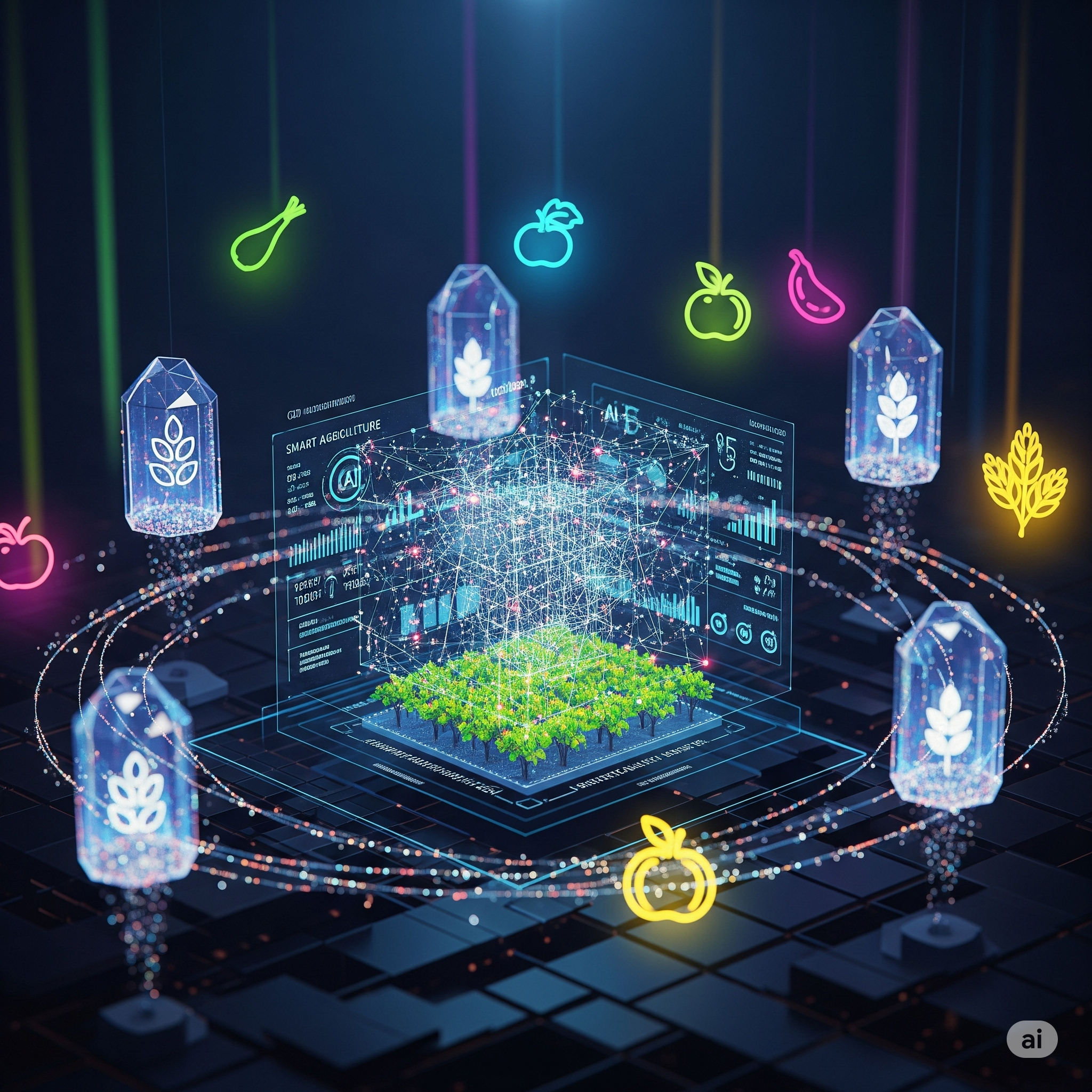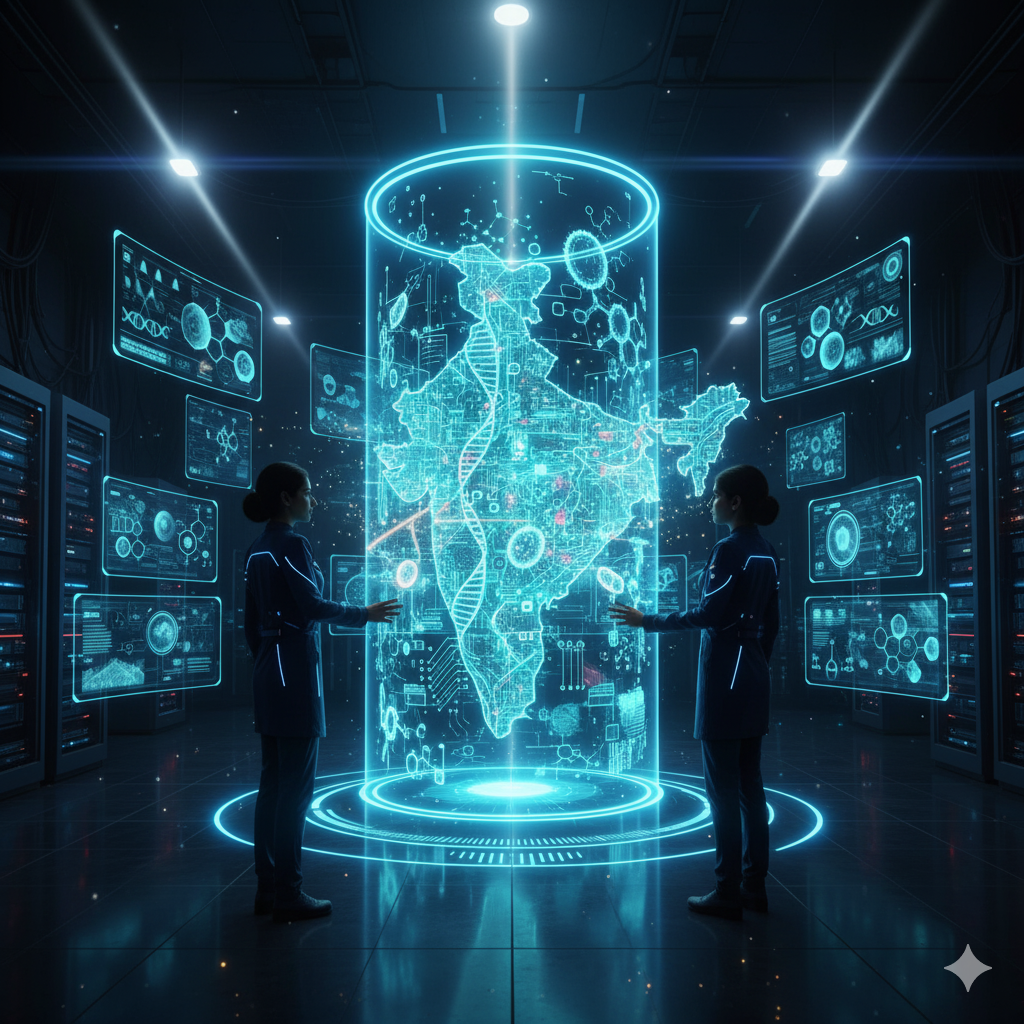1. Introduction
Food wastage is one of the most pressing global challenges of the 21st century. According to the Food and Agriculture Organization (FAO), nearly 1.3 billion tonnes of food—roughly one-third of all food produced—is lost or wasted annually. This occurs while over 800 million people go hungry worldwide. In India alone, millions of tonnes of food perish every year due to inefficient logistics, poor storage, and lack of data-driven infrastructure.
Two transformative technologies—Artificial Intelligence (AI) and Blockchain—are showing immense promise in tackling this problem. From smarter supply chains to transparent food tracking and better demand forecasting, these technologies are driving a much-needed revolution in agriculture and food logistics.
This article explores the role of AI and Blockchain in reducing food wastage, especially from a developing country perspective, with a special focus on India.
2. Understanding the Food Wastage Problem
Food waste occurs at multiple levels:
- Production stage (due to overplanting, pests, climate issues)
- Post-harvest and storage (due to poor warehousing, improper temperature)
- Processing and packaging (due to quality standards or inefficiencies)
- Distribution and retail (due to spoilage or overstocking)
- Consumption (household and restaurant waste)
In developing countries like India, a major portion of food loss happens between harvest and market, primarily due to lack of storage infrastructure, real-time monitoring, and poor supply chain coordination.
3. What is Artificial Intelligence (AI)?
AI is the simulation of human intelligence in machines that are programmed to think, learn, and solve problems. In the context of food systems, AI helps to:
- Forecast demand and production
- Predict spoilage
- Automate sorting and grading
- Optimize transportation routes
- Monitor storage conditions
By learning from large datasets, AI tools improve over time and reduce uncertainty in agriculture and logistics.
4. What is Blockchain?
Blockchain is a decentralized, immutable ledger that records transactions in a secure and transparent way. In agriculture, it allows:
- End-to-end traceability
- Tamper-proof documentation of food movement
- Authentication of certifications (like organic labels)
- Real-time visibility for farmers, retailers, and consumers
Blockchain builds trust and accountability throughout the food supply chain.
5. Role of AI in Reducing Food Waste
a. Demand Forecasting
AI models analyze historical sales data, weather patterns, festivals, and market trends to predict demand for specific crops. This prevents overproduction, which often leads to surplus food rotting before it reaches consumers.
b. Crop Health Monitoring
Using drones, satellites, and AI-powered image recognition, farmers can detect diseases, pests, or water stress early. Timely action reduces losses and ensures better yield quality.
c. Intelligent Harvest Planning
AI systems recommend the optimal time for harvesting based on weather predictions and market demand, preventing early or delayed harvesting that often causes spoilage.
d. Smart Storage Management
AI sensors in warehouses track temperature, humidity, and gas emissions. These systems alert managers before food spoilage occurs and suggest ideal conditions to preserve different types of produce.
e. Sorting and Grading
AI-powered machines use computer vision to automate sorting and grading of fruits, vegetables, and grains. This reduces human error and ensures only top-quality produce reaches retail, while others can be redirected to processing units rather than waste.
f. Route Optimization
AI optimizes transportation routes and timing to ensure perishable food reaches its destination before spoilage. It considers traffic, temperature, road conditions, and vehicle availability.
g. Consumer Waste Reduction
AI-enabled apps provide smart recipes, track expiry dates, and suggest meal plans using leftovers—helping consumers reduce household food waste.
6. Role of Blockchain in Reducing Food Waste
a. End-to-End Traceability
Blockchain records every step of the food’s journey—from farm to plate—ensuring complete traceability. This allows quick recalls of spoiled products, reducing unnecessary disposal of entire batches.
b. Transparency for Consumers
With QR codes, consumers can scan products to learn where and when the food was grown, by whom, and under what conditions. Greater transparency builds trust and encourages responsible consumption.
c. Authentication of Certifications
Many food items claim labels like “organic” or “pesticide-free,” but without proof. Blockchain secures these claims by recording data from certified bodies, reducing fraud and allowing better pricing for authentic produce.
d. Reducing Middlemen and Delays
Smart contracts on blockchain can automate payments and transactions between farmers, buyers, and logistics providers. Faster processing reduces food spoilage during storage or transit due to payment delays.
e. Inventory and Shelf Life Management
Blockchain combined with IoT helps retailers track expiry dates, storage conditions, and movement history, allowing them to prioritize sale or redistribution of perishable items.
f. Redistribution and Donations
Blockchain platforms connect producers and retailers with food banks or NGOs in real-time, allowing excess food to be redirected instead of wasted.
7. Combining AI and Blockchain: A Powerful Synergy
When AI and blockchain are combined, the result is a predictive, secure, and transparent system that not only reduces waste but increases efficiency.
| AI Function | Blockchain Role |
|---|---|
| Predicts demand | Secures procurement agreements |
| Monitors crop health | Logs health reports to improve insurance processes |
| Manages cold storage | Records temperature logs for compliance |
| Sorts and grades produce | Tags quality levels on blockchain |
| Suggests logistics routes | Tracks movement and prevents delays |
Together, these tools enable smart decision-making with trust-based records.
8. Real-World Applications and Case Studies
1. IBM Food Trust
One of the world’s largest blockchain-based food traceability platforms. Companies like Walmart and Nestlé use it to track food origin, quality, and safety. It has helped reduce product recall times from days to seconds.
2. Intello Labs (India)
Uses AI-powered computer vision to automate the grading of produce like apples, onions, and grains. This ensures that low-quality produce is sent to processing instead of being wasted.
3. Agri10x
An Indian startup using AI and blockchain to connect farmers directly with buyers, eliminating middlemen and reducing food spoilage due to market access delays.
4. SAP Leonardo
Combines AI, IoT, and blockchain to help food companies manage inventory, optimize storage, and reduce food loss in transit.
9. Benefits of AI and Blockchain in Food Systems
| Benefit | Impact |
|---|---|
| Reduced food waste | Less spoilage at all stages |
| Improved farmer income | Smarter planning and direct market access |
| Enhanced food safety | Transparent tracking and faster recall |
| Better consumer trust | Proven certifications and traceability |
| Streamlined operations | Automated payments and logistics |
| Lower carbon footprint | Efficient transport and resource usage |
10. Challenges and Limitations
While the potential is immense, there are several challenges:
1. High Initial Cost
Installing AI sensors, blockchain platforms, and IoT devices requires significant investment, often out of reach for small farmers.
2. Technical Complexity
Many farmers and agri-workers lack the digital literacy needed to use these technologies effectively.
3. Infrastructure Gaps
Lack of reliable internet and electricity in rural areas hampers deployment.
4. Data Privacy
Blockchain’s immutable nature means that sensitive data may be visible to multiple parties, raising privacy concerns.
5. Standardization Issues
Lack of common data formats and protocols makes integration difficult across platforms and stakeholders.
11. How Governments and Institutions Can Help
1. Provide Subsidies and Incentives
Governments can fund AI sensors and blockchain platforms, especially for Farmer Producer Organizations (FPOs) and cooperatives.
2. Build Digital Infrastructure
Improve rural internet connectivity and provide digital literacy training.
3. Encourage Public-Private Partnerships
Collaborate with agri-tech startups and logistics providers to pilot AI + blockchain solutions.
4. Create Regulatory Frameworks
Establish standards for blockchain traceability and AI decision-making to ensure trust and interoperability.
5. Include in Education
Incorporate digital agriculture topics into school and college curricula to prepare the next generation of tech-savvy farmers.
12. The Way Forward
The battle against food waste must be fought with technology, collaboration, and policy reform. AI and blockchain can:
- Predict and prevent food spoilage before it occurs
- Digitally document and secure every step of food movement
- Empower farmers, retailers, and consumers with real-time data
- Build resilient, traceable, and equitable food systems
As climate change intensifies and food demand rises, the need for smart, tech-driven solutions is no longer optional—it’s essential. With proper planning and support, AI and blockchain can not only reduce food wastage but transform global food security.
13. Conclusion
Food wastage is a crisis that spans economic, environmental, and ethical dimensions. While traditional solutions have made progress, AI and blockchain offer revolutionary possibilities—bringing intelligence and trust to food systems.
In a world where millions go to bed hungry while food rots in warehouses and trucks, technology must bridge the gap. The integration of AI’s predictive power with blockchain’s transparency can dramatically reduce inefficiencies and create a fairer, smarter, and more sustainable food future.




